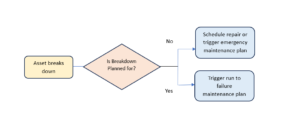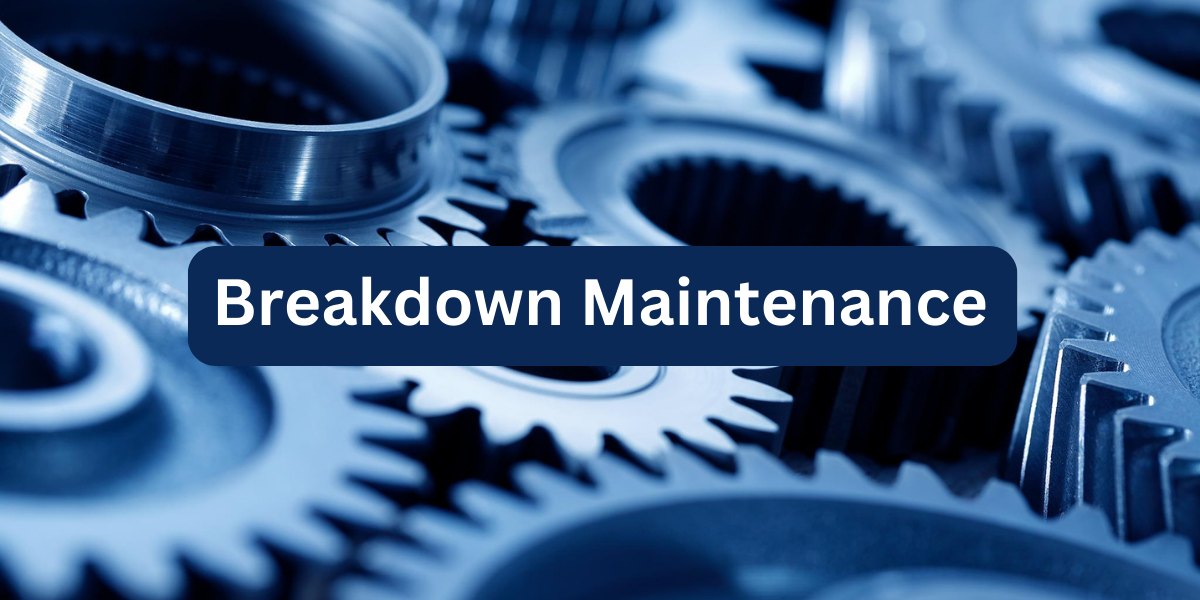What is Breakdown maintenance?
Breakdown maintenance is a type of maintenance strategy that focuses on repairing equipment or machinery whenever it breaks down. Unlike preventive maintenance, which involves regularly scheduled inspections and maintenance tasks, breakdown maintenance workflow takes place only when there is a failure or breakdown.
Breakdown maintenance, as the name suggests, involves addressing equipment failures as they occur. The main objective of this maintenance approach is to restore equipment to its operational state so that production or services can resume. It is a reactive maintenance strategy that is often used in situations where the cost of a preventive maintenance schedule outweighs the cost of addressing machine breakdowns when they happen.
Breakdown Maintenance Workflow

Breakdown maintenance is an essential aspect of facility management and equipment maintenance. It involves addressing issues and failures that occur unexpectedly, impacting productivity and operations.
Types of breakdown maintenance
1) Planned maintenance
2) Unplanned breakdown maintenance
Planned Maintenance
Planned maintenance is a proactive approach to equipment maintenance that focuses on preventing breakdowns before they occur. It involves systematic inspections, regular servicing, and scheduled maintenance activities based on manufacturers recommendations and industry best practices. The main objective of planned maintenance is to keep equipment in optimal operating condition to minimize unexpected failures and maximize reliability.
Key features of planned maintenance
- Preventive Inspections: Regular inspections are conducted at predetermined intervals to identify potential faults or signs of wear and tear.
- Scheduled Servicing: Routine servicing is performed as per a maintenance schedule to ensure the smooth functioning of equipment.
- Lubrication and Calibration: Proper lubrication and calibration of machinery are carried out to improve performance and extend their lifespan.
- Replacing Worn-out Parts: Planned maintenance also involves replacing worn-out components or parts to prevent breakdowns caused by their failure.
- Documentation: Detailed records of maintenance activities, including inspection findings, repairs, and replacements, are maintained for future reference.
Benefits of planned maintenance include reducing downtime, improving equipment efficiency, enhancing safety, and extending asset lifespan. By following scheduled maintenance practices, businesses can reduce the likelihood of sudden equipment failures and operational disruptions.
Unplanned Breakdown Maintenance
Unplanned breakdown maintenance, as the name suggests, occurs when equipment unexpectedly fails, disrupting operations and causing downtime. It is a reactive approach that involves quick responses to address the failure when it happens. This type of maintenance aims to restore equipment functionality promptly to minimize the impact of the breakdown.
Key aspects of unplanned breakdown maintenance
- Emergency Response: Once a breakdown occurs, immediate action is taken to identify the root cause and rectify the issue to restore normal operations.
- Troubleshooting: Technicians or maintenance personnel diagnose the problem and perform necessary repairs or replacements of faulty parts.
- Minimizing Downtime: The primary objective of unplanned breakdown maintenance is to minimize downtime by implementing swift and efficient repairs.
- Analyzing Failure Causes: After resolving the issue, analyzing the cause of the breakdown helps in implementing measures to prevent similar failures in the future.
While unplanned breakdown maintenance is reactive and can lead to unexpected costs and disruptions, it is still crucial for addressing unforeseen incidents and ensuring business continuity. However, a well-planned maintenance strategy should strive to minimize the reliance on unplanned breakdown maintenance by focusing more on preventive measures.
Why does breakdown happen?
There can be various reasons for breakdowns to occur. Aging equipment, lack of maintenance, improper handling, wear and tear, and unexpected events like power outages or accidents can all lead to a breakdown. Additionally, environmental factors such as temperature, humidity, or exposure to harsh conditions can also contribute to the failure of equipment.
Pros & Cons of breakdown
Pros of breakdown maintenance:
Cost-effective: Breakdown maintenance can be cost-effective as it avoids unnecessary maintenance tasks and focuses only on addressing failures when they happen, reducing overall maintenance costs.
Flexibility: With breakdown maintenance, there is no need to adhere to fixed maintenance schedules, giving the flexibility to allocate resources as needed.
Extended lifespan: Equipment that undergoes breakdown maintenance can potentially have a longer lifespan since repairs are done as quickly as possible.
Cons of breakdown maintenance:
Downtime: Breakdown maintenance can lead to significant downtime as equipment needs to be repaired, resulting in a delay in production or services.
Potential safety risks: If breakdowns occur in critical equipment without proper monitoring, it can pose safety risks to workers or the surrounding areas.
Unexpected expenses: The cost of repairs during breakdown maintenance can be unpredictable and sometimes more expensive than preventive maintenance.
Both planned maintenance and unplanned breakdown maintenance play significant roles in equipment management. While planned maintenance focuses on proactive measures to prevent breakdowns, unplanned breakdown maintenance addresses unforeseen failures to restore operations swiftly. Implementing a combination of these two maintenance approaches can contribute to the smooth functioning, reliability, and longevity of equipment assets.

